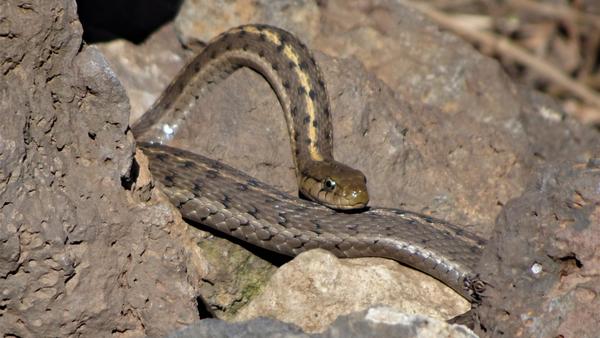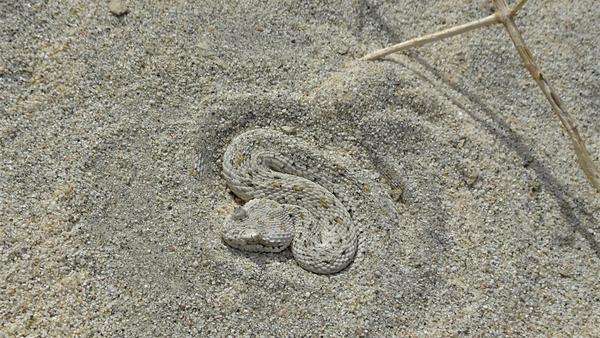Snakes have much to teach us
“A snake knows more about what is happening around than any other creature, because it has no ears to listen to gossip — only direct perception.” — Jaggi Vasudev
Ever since a serpent encouraged Eve to taste fruits from the tree of knowledge, snakes have been part of the fables, the lore, and culture of humans. Rudyard Kipling cast Kaa (a giant snake) as a benevolent advisor and guide to Mowgli in his Jungle Book, but unfortunately snakes’ given role in these many fables has all too often been less than positive.
Using “snake” as an adjective describing a human never refers to a person of good character. About half the world’s human population are anxious around snakes, and for a very small percentage of those that anxiety can be crippling and is called ophidiophobia. I recently had a houseguest ask when standing in the safety of my doorway, looking out on my native desert landscaped yard, if snakes lived there. When I said yes, he visibly shifted himself further inside my home. For the other half of humanity, perceptions of snakes range from curiosity to passion. Many naturalists fall into that latter category.
So, what is a snake? They are reptiles that lack legs (although large pythons and boas have vestigial leg bones). But not all legless reptiles are snakes. At least five different families of lizards have evolved legless species, most of which live in loose sand and soil environments and spend their lives under the surface of the soil, sand, or leaf litter. In our neighborhood we have a one species of legless lizard — Stebbins legless lizard, family Anniellidae — that just barely reaches into our desert fringes. There are recent sightings at the very western-most edge of Joshua Tree National Park, and more commonly detected in the Big Morongo Canyon Preserve. Of course, they are fossorial (mostly live underground or in leaf-litter) so “more commonly” still means rarely seen. I have a friend who used to live in the Anza area who said he occasionally found them under boards and other debris. Same for the Pinyon flat region. The point is that being legless does not make you a snake.
No snakes have eyelids and none have ears, but one group of lizards also lack eyelids (some geckos) and another group lacks ears (earless lizards, closely related to our zebra-tailed lizards). Never get into a staring contest with a snake, you will always lose. Also, no need to whisper around a snake, as they cannot hear you. They can detect you by smell and ground vibrations and for pit vipers, by heat. All snakes are predators; they hunt and eat the prey they catch. Most lizards are also predators, but large numbers of lizards also eat plants, and some are exclusively vegetarians. There are no vegetarian snakes. Some snakes can inject venom into their prey, which subdues the prey but also starts the digestion process. Some lizards (and some snakes) also have toxic saliva which they can chew into their prey (some monitor lizards, in Asia and Africa, including Komodo dragons, as well as Gila monsters and beaded lizards in the Sonoran Desert and into Central America). Most of us think we can easily distinguish snakes from lizards (the eyelids on legless lizards give them away), however, recent genetic analyses have revealed that, rather than snakes being a completely different branch of the reptilian tree of life, that they are imbedded within the lizard tree of life. According to the genetics, snakes are more closely related to our chuckwallas, than chuckwallas are related to geckos or skinks!
I often tout the rich diversity of lizards living within 50 km of the Coachella Valley (33 species!) however, our snake diversity is equally impressive. Off the top of my head, we have at least 22 snake species here, including six species of rattlesnakes. Yet most folks never see them. As it turns out predatory birds, hawks and roadrunners, have snakes on the top of the menus, and so to survive the snakes make it hard to be seen. Most are nocturnal and those that come out during the day are elusive. I spend a lot of time on desert trails, and I have probably seen no more than four snakes this year. People who really want to see snakes drive less-traveled roads at night to hopefully see the nocturnal snakes warming themselves on the roads. Still, whether it is on a trail or driving the roads well past midnight, every snake sighting is exciting.
The group of snakes that brings the most negative attention are rattlesnakes. On a list of examples of humanity at our worst, rattlesnake roundups held annually in Texas and nearby states must be given a very high ranking. Many thousands of rattlesnakes are brutally extracted from their burrows, often by spraying gasoline into their den, then tortured for hours before being killed. Yet like wolves, predators like rattlesnakes are keys to healthy ecosystems, controlling rodent populations which then allows for seeds to survive and then new plants to sprout and continue to exist. Senseless killing of rattlesnakes is just that, senseless, providing no benefits to a healthier or safer environment. Once every few years I will see a rattlesnake in our yard; afterward the rat and mouse populations temporarily disappear, and new plants germinate and thrive. The snakes have always been respectful of my space, and I of theirs.
Years ago, while I was surveying ants and other insects on the remaining Coachella Valley sand dunes, I was checking the contents of pitfall cups place over night in the sand. At each cup I sat down and recorded all the insects that had fallen into each cup and then let them all go. Once finished and walking back to my vehicle I was amusing myself by studying the tracks I left in the sand, every footfall and every “backside print” from where I had sat down. Then I noticed that just inches from one of my sit-down prints was a coiled sidewinder partially buried in the sand. No snake tracks led to the coiled snake; it had been there the whole time while I sat and counted ants and beetles. No aggression.
Snakes have much to teach us, and from my perspective tasting the fruits from the tree of knowledge cannot happen enough.
Nullius in verba
Go outside, tip your hat to a chuckwalla (and a cactus), think like a mountain, and be safe.

